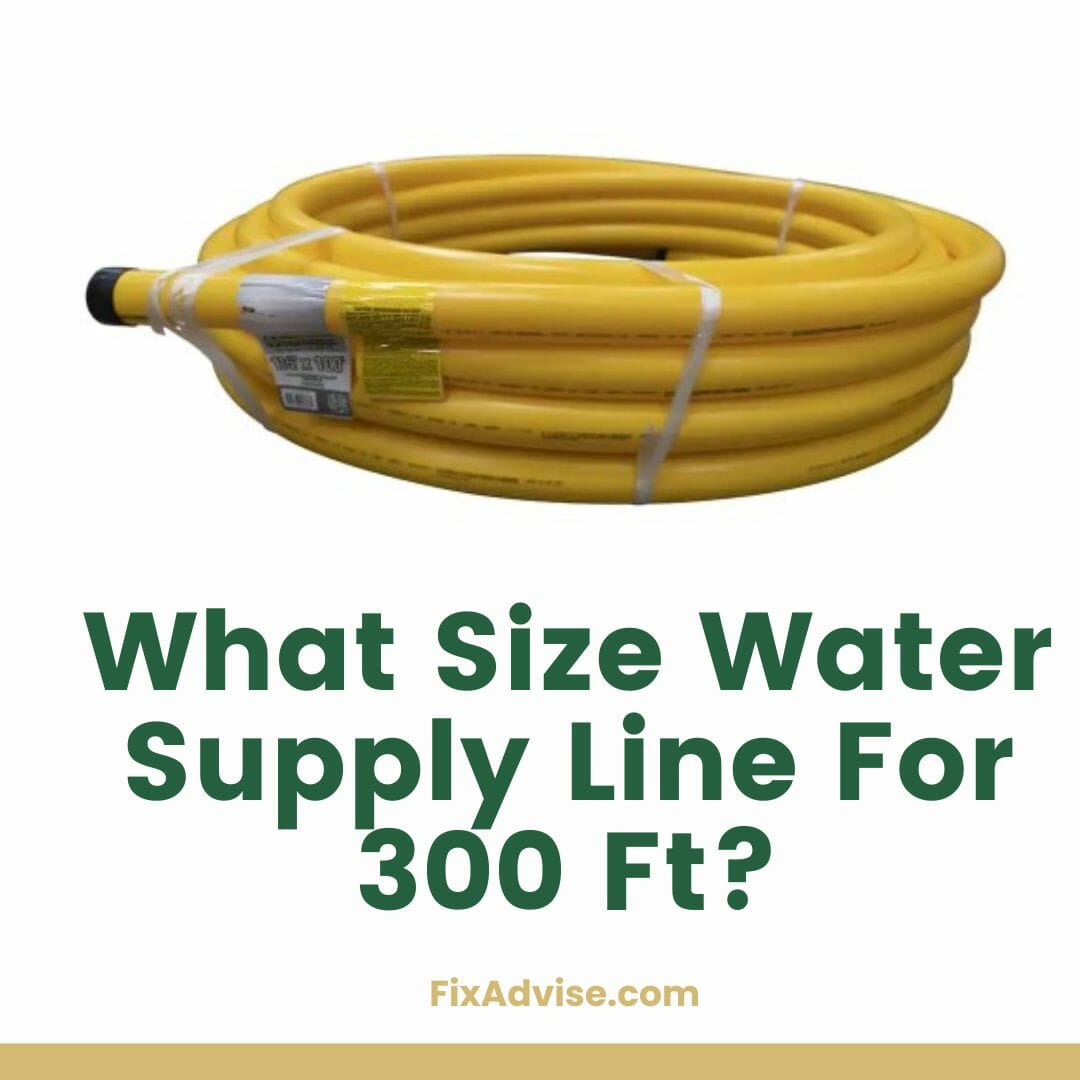Are you planning to install a water supply line for a property that’s 300 ft away from the main water source? If so, you might be wondering what size of water supply line you need. The size of the water supply line is crucial to ensure efficient and steady water flow. In this article, we’ll guide you through the factors that determine the water supply line size and help you choose the best one for your needs.
Whether you’re building a new property or upgrading your old water supply line, choosing the right size is essential. A small supply line can result in low water pressure, while a large one can be expensive and unnecessary. So, let’s explore the factors you need to consider to determine the right size water supply line for 300 ft.
The recommended size for a water supply line for 300 ft is 1 1/2 inch. However, the size of the water supply line may vary depending on factors such as the flow rate, pressure, and the number of fixtures in your home.
What Size Water Supply Line is Needed for a 300 ft Distance?

Factors Affecting Water Supply Line Size
The size of a water supply line is essential in ensuring adequate water flow and pressure in a building. Several factors affect the required size of a water supply line, including the distance from the water source, the number of fixtures in the building, and the expected water usage.
When it comes to a water supply line for a 300 ft distance, the primary factor affecting the size of the line is the flow rate. The flow rate is the amount of water that passes through the pipe in a given time, measured in gallons per minute (GPM). The flow rate is affected by the friction loss in the pipe, which is the resistance of the water to flow due to the pipe’s length, diameter, and material.
The flow rate needed for a 300 ft water supply line depends on the building’s water demand. A larger building with more fixtures and occupants will require a higher flow rate than a smaller building. The water demand is typically measured in gallons per minute (GPM) or gallons per day (GPD) and is calculated based on the building’s occupancy, fixture count, and water usage patterns.
Water Supply Line Sizes for a 300 ft Distance
The required size of a water supply line for a 300 ft distance depends on the flow rate needed to meet the building’s water demand. According to the International Plumbing Code (IPC), the minimum size of a water supply line is 3/4 inch. However, this size may not be sufficient for a 300 ft distance, especially if the building has a high water demand.
For a 300 ft distance, a 1-inch water supply line is recommended to ensure adequate water flow and pressure. A 1-inch line can provide a flow rate of up to 18 GPM, which is sufficient for most residential and commercial buildings. However, for larger buildings with high water demand, a 1 1/4-inch or 1 1/2-inch line may be required to meet the flow rate needs.
Benefits of a Properly Sized Water Supply Line
Installing a properly sized water supply line has several benefits, including:
- Ensuring adequate water flow and pressure in the building
- Reducing the risk of leaks and pipe bursts
- Improving water quality and reducing the risk of contamination
- Reducing energy costs by minimizing the friction loss in the pipe
A properly sized water supply line can also increase the resale value of the property and provide peace of mind to the occupants.
1-inch vs. 3/4-inch Water Supply Line
A common question when it comes to water supply line size is whether to use a 1-inch or 3/4-inch line. While a 3/4-inch line is the minimum size required by code, it may not be sufficient for a 300 ft distance, especially for larger buildings. A 1-inch line provides a higher flow rate and pressure than a 3/4-inch line, ensuring adequate water supply to the building. It also reduces the risk of leaks and pipe bursts and improves water quality. Although a 1-inch line may be more expensive to install, it provides long-term benefits and is a worthwhile investment.
Conclusion
Choosing the right size water supply line for a 300 ft distance is crucial in ensuring adequate water flow and pressure in the building. The size of the line depends on several factors, including the flow rate needed to meet the building’s water demand. A 1-inch line is recommended for most buildings, but larger buildings with high water demand may require a 1 1/4-inch or 1 1/2-inch line. Installing a properly sized water supply line provides numerous benefits, including reducing the risk of leaks and pipe bursts, improving water quality, and increasing the property’s resale value.
Frequently Asked Questions
In this section, we have answered some of the frequently asked questions related to water supply lines.
How do I determine the correct size of water supply line for my house?
The size of the water supply line depends on various factors, such as the number of fixtures in your house, the distance between the main water supply and your house, and the flow rate required. In general, a 3/4-inch supply line is suitable for most residential properties. However, if you have a large house or high water demand, you may need a 1-inch supply line.
It is always recommended to consult a professional plumber to determine the correct size of water supply line for your specific needs.
What is the maximum distance for a water supply line?
The maximum distance for a water supply line depends on several factors, such as the flow rate, the size of the supply line, and the elevation difference between the main water supply and your house. In general, a 3/4-inch supply line can supply water up to 250 feet, and a 1-inch supply line can supply water up to 500 feet. However, these values may vary depending on your specific situation.
If you need to supply water beyond these distances, you may need to install a booster pump or a larger supply line.
Can I use a smaller water supply line for a shorter distance?
While you may be tempted to use a smaller water supply line for a shorter distance, it is not recommended. A smaller supply line can cause low water pressure and flow rate, which can lead to inadequate water supply and damage to your appliances and fixtures. It is always best to follow the recommended size of the water supply line for your specific situation.
If you are unsure about the correct size of the supply line, it is best to consult a professional plumber.
What is the best material for a water supply line?
The best material for a water supply line depends on various factors, such as the water quality, the soil type, and the climate. In general, copper, PVC, and PEX are the most commonly used materials for water supply lines. Copper is durable and has excellent corrosion resistance, but it is expensive and requires skilled installation. PVC is affordable and easy to install, but it may not be suitable for hot water supply. PEX is flexible and easy to install, but it may not be suitable for outdoor use.
It is always recommended to consult a professional plumber to determine the best material for your specific needs.
What is the average cost to install a water supply line?
The cost to install a water supply line depends on various factors, such as the distance between your house and the main water supply, the size of the supply line, and the material used. In general, the cost can range from $500 to $2,500 or more. Copper is the most expensive material, and PVC and PEX are more affordable. The installation cost may also vary depending on the complexity of the job and the labor rates in your area.
It is always recommended to get a detailed estimate from a professional plumber before starting the installation process.
Conclusion
In conclusion, determining the appropriate size of water supply line for a 300 ft distance is crucial for ensuring optimal water flow and pressure in your home. It’s important to take into account factors such as the number of fixtures in your home and the overall water demand. Consulting with a professional plumber can help you determine the appropriate size of the water supply line for your specific needs.

